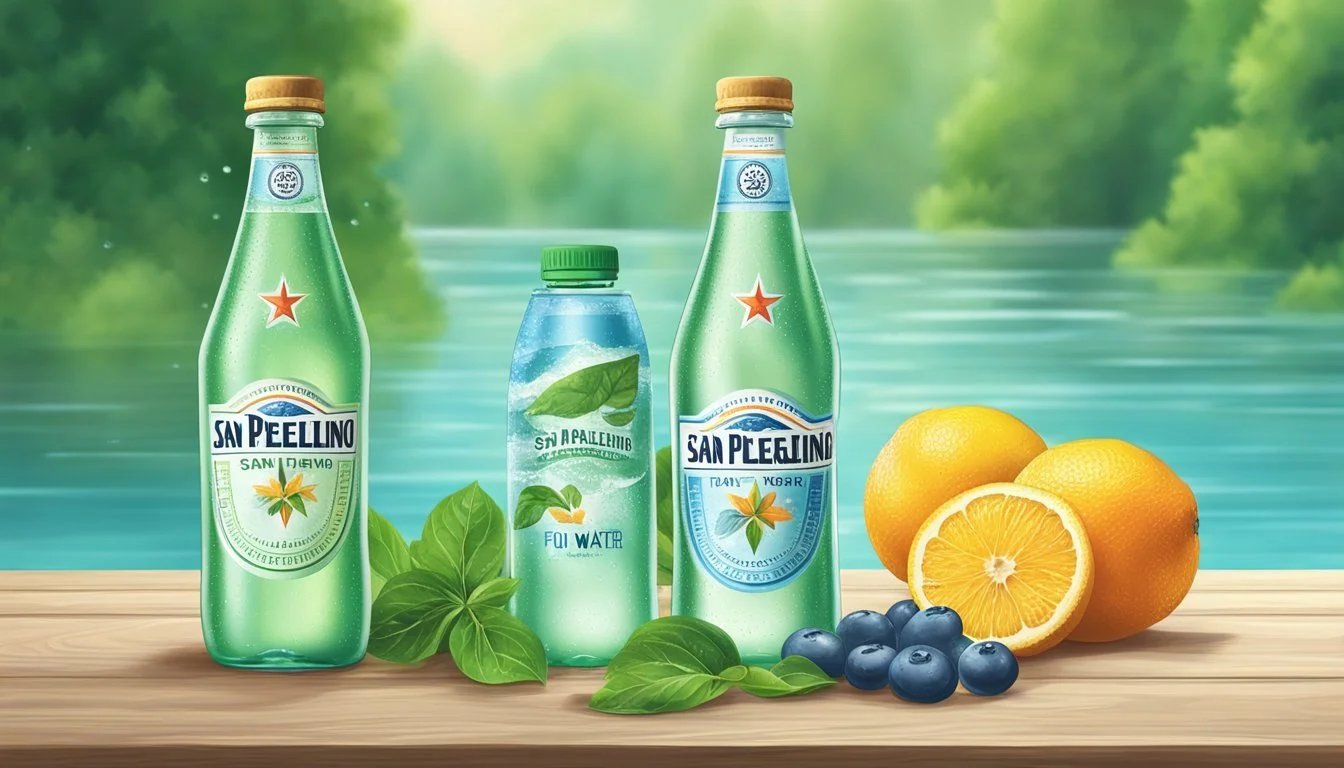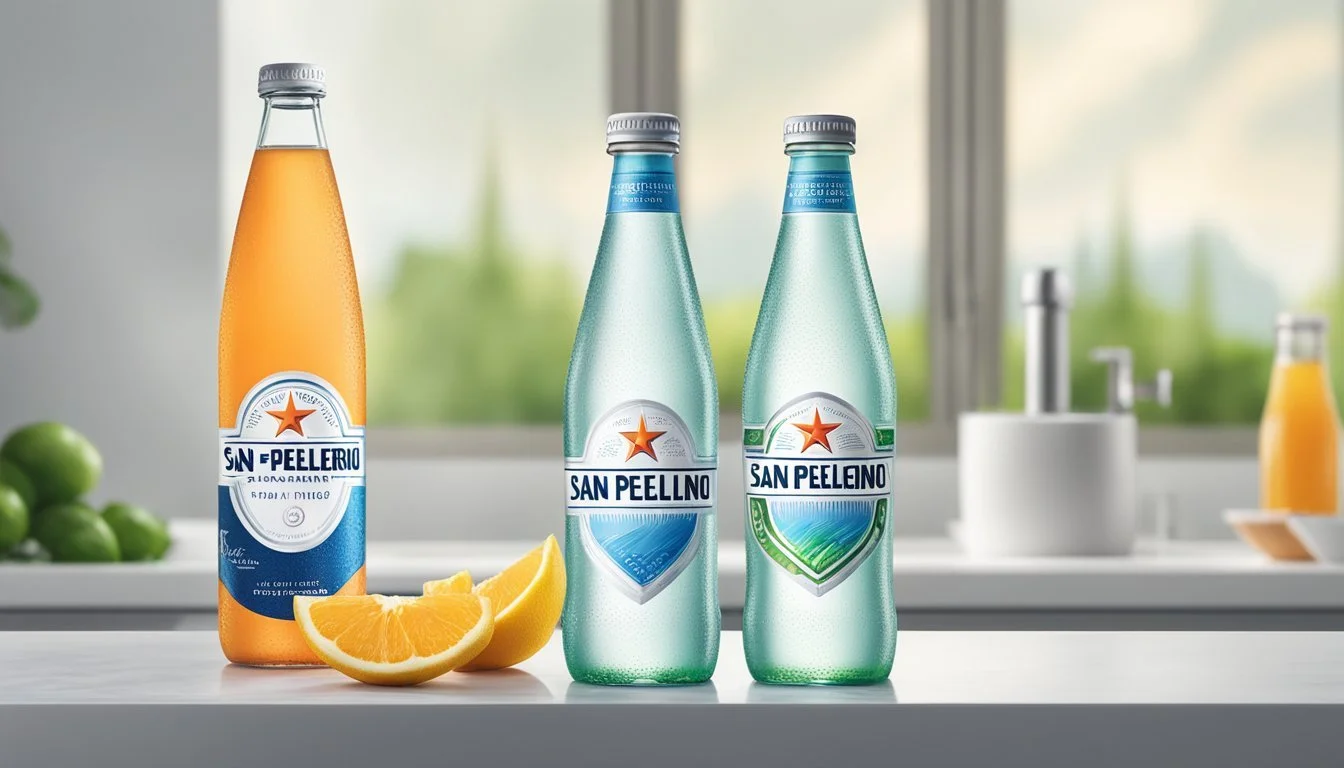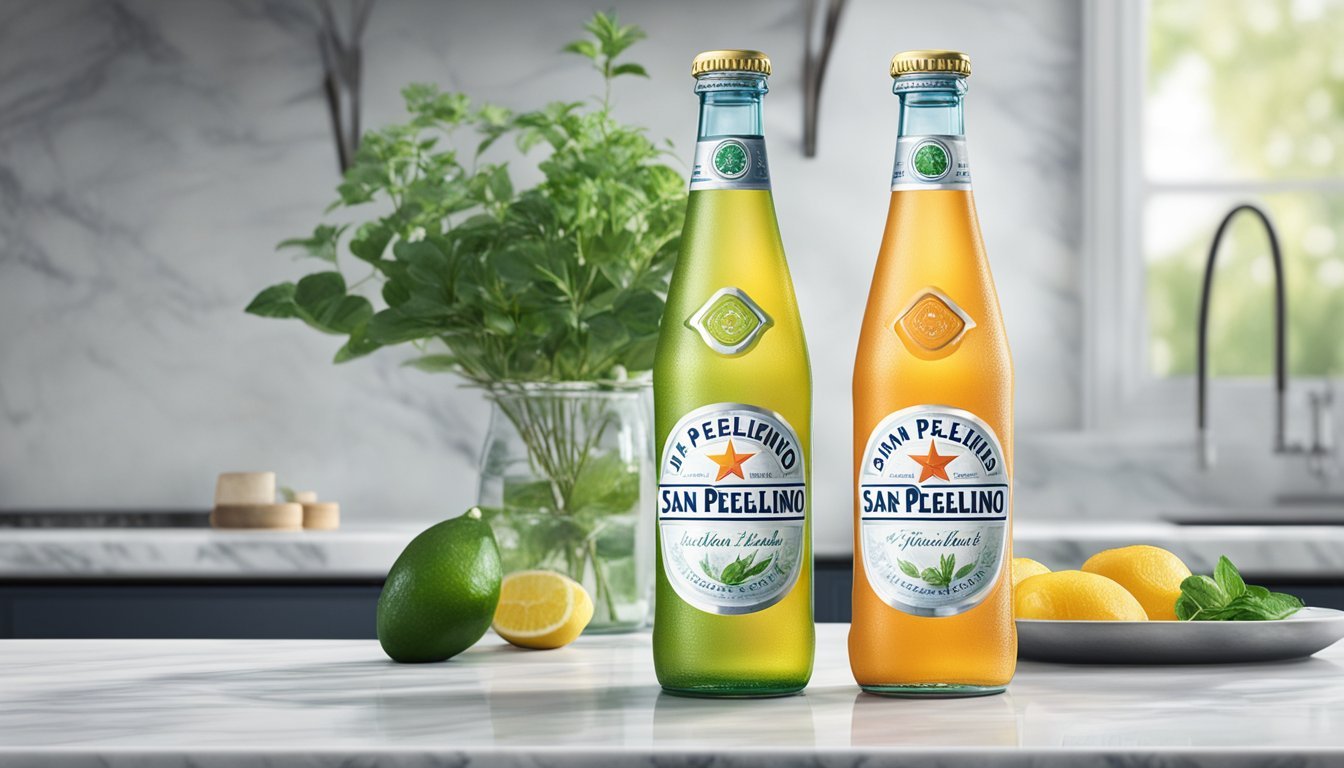San Pellegrino vs. Flow
Comparing Top Bottled Water Choices
When selecting bottled water, discerning consumers often find themselves comparing well-known brands like San Pellegrino and Flow. Both offer unique characteristics that cater to different preferences. San Pellegrino, renowned for its finely carbonated mineral water, has been a staple in fine dining and everyday hydration alike. Its crisp taste and slight fizz differentiate it from other sparkling waters on the market.
Flow, on the other hand, prides itself on its naturally alkaline spring water, sourced from a family-owned spring in Canada. Packaged in environmentally-friendly tetra packs, Flow combines sustainability with purity, offering a distinctly smooth taste that many find refreshing. San Pellegrino offers a compelling choice for those who enjoy a more effervescent drinking experience, while Flow appeals to consumers seeking a mild, eco-conscious option.
Ultimately, the choice between San Pellegrino and Flow hinges on personal preference and values. For those who appreciate a bold, fizzy sensation with their hydration, San Pellegrino stands out. Conversely, Flow's commitment to environmental responsibility and its distinctly clean taste may attract those looking for an eco-friendly and subtly flavored water.
Understanding Bottled Water
Bottled water varies significantly based on its source and composition. Factors such as origin, mineral content, and health benefits play crucial roles in differentiating types of bottled water available on the market.
Categories of Bottled Water
Bottled water can broadly be categorized into several types, each with unique characteristics. Sparkling water contains natural or added carbonation, making it effervescent. Mineral water must contain at least 250 parts per million total dissolved solids and is sourced from a naturally protected underground water source. Spring water comes from an underground formation from which water flows naturally to the Earth's surface. Additionally, there is purified water, which includes tap water that has undergone processing to remove impurities.
The Significance of Source
The source of bottled water is crucial as it determines the mineral content and purity. Water from a natural spring or aquifer often carries high levels of naturally-occurring minerals, adding to its health value. Brands like San Pellegrino source their water from springs in the Italian Alps, contributing to their renowned mineral composition. Similarly, Flow boasts its source from an artesian aquifer, highlighting its natural purity. Understanding the source helps consumers make informed choices based on taste preference and health considerations.
Health Implications of Bottled Water
Health benefits and safety are critical when choosing bottled water. Mineral water provides essential minerals like calcium and magnesium, beneficial for daily intake. Sparkling water may aid digestion but can be slightly more acidic, as noted with San Pellegrino's pH of 5.6. Access to quality reports ensures consumers know what they are drinking, reinforcing trust in bottled water. Assessing the health implications involves considering these factors and weighing them against individual health needs and preferences.
San Pellegrino and Flow: Brand Overview
San Pellegrino offers an Italian fine dining experience with its acclaimed mineral water, while Flow represents a modern approach emphasizing sustainability. Below is a detailed exploration of each brand's key attributes.
San Pellegrino: An Italian Classic
San Pellegrino mineral water originates from the Italian Alps, specifically in the town of San Pellegrino Terme. This region is famed for its rich natural minerals. Since 1899, San Pellegrino has been a premium choice for hydration and is celebrated in the restaurant and fine dining scenes.
This bottled water is noted for its fine bubbles and slightly salty taste, making it a perfect palate cleanser in Italian cuisine. San Pellegrino is best served at 6-8°C (43-46°F) to enhance its sparkling quality. Its production process ensures the preservation of its natural mineral content, making it a staple in homes and upscale eateries globally.
Flow: The New Contender
Flow is a relatively new brand that differentiates itself with a strong focus on sustainability. Its water is sourced from artesian springs, ensuring it is naturally rich in minerals. The brand places emphasis on eco-friendly packaging, using 100% recyclable and renewable materials, aligning with modern environmental concerns.
Besides its commitment to sustainability, Flow's water boasts a smooth and distinct taste due to its alkalinity and natural mineral content. This makes it a popular choice for health-conscious consumers. Flow's approach to hydration is innovative, marking a shift toward more responsible and conscious consumption in the bottled water market.
Composition and Taste Profile
San Pellegrino and Flow are distinct in their composition and taste profile, offering unique benefits based on their mineral content and overall flavor.
Mineral Content and Health Benefits
San Pellegrino is renowned for its rich mineral content, including significant amounts of sodium, calcium, and magnesium. The presence of these minerals contributes to its distinctive taste and potential health benefits. For instance, calcium and magnesium are essential for maintaining bone health and muscle function.
Mineral San Pellegrino (mg/L) Flow (mg/L) Sodium 33 5 Calcium 174 25 Magnesium 53 4.9 Potassium 2 1.1
Flow, an alkaline spring water, is marketed for its electrolytes, with lower levels of sodium but notable amounts of calcium and magnesium. Flow also boasts a higher pH level, around 8.1, which some believe aids in balancing the body's acidity.
Taste and Palate Experience
San Pellegrino is known for its effervescence and minerality. The bubbles provide a tingling sensation, making it a popular choice as a palate cleanser in fine dining. The higher sodium content adds a slight salty note, enhancing the water's crispness and refreshment qualities.
Flow offers a significantly different taste experience with its alkaline nature. Its smooth and slightly sweet flavor profile comes from its lower mineral content compared to San Pellegrino. The subtle taste makes it suitable for everyday hydration without overpowering the palate.
Both waters offer unique palate experiences, catering to different preferences. San Pellegrino's fizzy texture and robust minerality contrast sharply with Flow's smooth, mild taste, showcasing the diversity in bottled water options.
Production and Carbonation
San Pellegrino and Flow are bottled waters that differ significantly in their production methods and carbonation processes. Each brand’s approach to these aspects influences the taste, texture, and overall drinking experience of the water.
The Journey from Source to Bottle
San Pellegrino begins its journey from natural springs located in the foothills of the Italian Alps. This region, rich in geological history, imbues the water with a unique mineral composition. San Pellegrino is collected near areas of ancient volcanic activity, enhancing its mineral profile with elements like calcium and magnesium.
On the other hand, Flow sources its water from artesian springs in Canada. These springs are protected from environmental pollutants by natural rock formations. The water undergoes minimal processing to retain its natural mineral balance and purity.
Carbonation: Natural vs Added
One key feature of San Pellegrino is its carbonation. The brand initially bottles the water flat, then adds carbon dioxide (CO2) during the bottling process. This method ensures a consistent level of bubbles and preserves the water's minerals.
Flow, in contrast, does not add carbonation. It offers still water, providing a smooth, clean taste that varies naturally with the source’s mineral content. The absence of bubbles allows Flow to highlight its natural, unaltered flavor profile, which appeals to those seeking a pure, non-carbonated drinking experience.
Consumer Experience
San Pellegrino and Flow offer distinct experiences for consumers in various contexts, from culinary settings to personal hydration preferences. Understanding how each brand caters to different needs helps in choosing the right bottled water.
The Role of Water in Culinary Settings
In fine dining and restaurant environments, water selection significantly impacts the overall dining experience. San Pellegrino is often favored by sommeliers and chefs due to its crisp and lively effervescence.
Its sparkling mineral water pairs well with rich and fatty dishes, enhancing flavors and cleansing the palate.
Flow, on the other hand, specializes in still and flavored water options. Its natural, alkaline water with a pH of 8.1 is smooth and has a subtle taste, making it ideal for pairing with lighter, delicate dishes where a sparkling option might overpower the flavors.
Some restaurants prefer Flow for its eco-friendly packaging, catering to environmentally conscious diners.
Comparing Consumer Preferences
Consumer preferences between San Pellegrino and Flow often reflect individual tastes and lifestyle choices. San Pellegrino's higher carbonation levels are attractive to those who enjoy a more pronounced fizz in their drinks.
It's a popular choice among consumers seeking a classic sparkling water experience during meals or social gatherings.
Flow caters to a different segment, offering both still and mildly flavored waters. Its naturally alkaline properties appeal to health-conscious consumers who appreciate the added benefit of hydration with a balanced pH.
Flow's flavored options provide variety, attracting those who prefer a slight taste enhancement without added sugars or artificial ingredients.
Both brands fulfill specific needs and preferences, demonstrating that the choice between them largely depends on the context and personal taste.
Market Representation
In today's competitive bottled water sector, market representation for San Pellegrino and Flow underscores their significance in the beverage industry. Both brands command attention through extensive brand presence and recognition, as well as strategic positions among numerous competitors.
Brand Presence and Recognition
San Pellegrino, renowned for its sparkling mineral water, is a staple in both upscale dining and everyday consumption. Widely associated with gourmet cuisine, San Pellegrino's distinctive green bottle and stylish branding make it a recognizable choice globally.
Flow, distinct for its sustainable packaging, markets itself as premium artesian water. With a commitment to environmental sustainability, Flow's eye-catching Tetra Pak cartons appeal to eco-conscious consumers.
Both brands leverage strategic sponsorships and partnerships to enhance visibility. San Pellegrino aligns with top-tier culinary events, while Flow collaborates with wellness influencers and fitness events to extend reach.
Assessment of Competitors
In the competitive landscape, both brands face rivals like Perrier, Topo Chico, and Evian in the premium bottled water segment. Perrier and Topo Chico, known for their carbonated offerings, capture the sparkling water market share alongside San Pellegrino.
Flow competes with brands like LaCroix, Bubly, and Spindrift, which are popular in the flavored and seltzer water categories. Additionally, eco-friendly brands such as Recess and Polar present alternatives in sustainable packaging, directly challenging Flow’s market position.
While San Pellegrino leverages tradition and prestige, Flow's environmental focus resonates with a younger, conscious consumer base, influencing their market representation and strategic emphasis within the beverage industry.
Economic and Environmental Factors
This section examines the cost and environmental practices of San Pellegrino and Flow, focusing on their pricing strategies and sustainability efforts.
Cost Analysis: Price and Accessibility
San Pellegrino and Flow have distinct pricing structures and market availability.
San Pellegrino, a brand originating from Italy, is often positioned as a premium product. Its prices reflect the brand's reputation and mineral content, and it is commonly found in fine dining establishments and retail stores across the United States, Canada, and other countries.
Flow, on the other hand, sources its water from natural springs in Canada and the United States. It markets itself as an eco-friendly option with added electrolytes and natural minerals. Flow's prices are competitive, and it is accessible through various retail channels and online platforms.
Sustainability: Environmental Impact and Practices
San Pellegrino's sustainability efforts focus on reducing its carbon footprint through eco-friendly bottling practices. They offer both glass and recycled plastic options, although the recycling of plastic remains a critical concern.
Flow emphasizes its environmental footprint by using Tetra Pak packaging, which is biodegradable and made from renewable resources. The company aims to minimize environmental impact through sustainable sourcing and strict water management practices.
Both brands acknowledge the significance of sustainable practices. San Pellegrino continues to work towards improving its ethical standards and reducing its environmental burden. Flow stands out with its innovative packaging and strong commitment to sustainability principles.
Final Synopsis
When comparing San Pellegrino and Flow, several key factors emerge.
Type of Water: San Pellegrino offers sparkling mineral water, known for its effervescence and balanced mineral content. Flow provides alkaline still water, boasting a higher pH level.
Mineral Composition: San Pellegrino is rich in minerals like calcium, magnesium, and sodium. Flow, with its alkaline nature, is designed to neutralize acidity.
Texture and Taste: San Pellegrino's sparkling texture and mineral taste complement gourmet foods. Flow's smooth texture and subtle taste cater to those preferring less mineral presence.
Quality Reports: Both brands undergo rigorous quality checks. San Pellegrino's reputation is solid with its consistent mineral profile; Flow emphasizes its eco-friendly packaging and naturally alkaline water.
Sparkling vs. Still: The choice between sparkling and still water depends on personal preference. San Pellegrino offers a crisp, bubbly experience while Flow provides a calm, still hydration.
Acidic vs. Alkaline: San Pellegrino, being slightly acidic, may not be suitable for those seeking alkaline water. Flow's alkaline nature offers an alternative for those conscious about their pH intake.
Bottom Line
Each brand offers unique benefits tailored to different consumer needs. San Pellegrino excels in gourmet settings with its premium sparkling water. Flow appeals to environmentally conscious consumers seeking alkaline hydration.
More About San Pellegrino
Acqua Panna vs San Pellegrino: Which Bottled Water is Better?
Boxed Water vs San Pellegrino: Which Bottled Water is Better?
Core Hydration vs San Pellegrino: Which Bottled Water is Better?
Ice Mountain vs San Pellegrino: Which Bottled Water is Better?
Icelandic Glacial vs San Pellegrino: Which Bottled Water is Better?
Just Water vs San Pellegrino: Which Bottled Water is Better?
Mountain Valley Spring Water vs San Pellegrino: Which Bottled Water is Better?
Nestle Pure Life vs San Pellegrino: Which Bottled Water is Better?
Poland Spring vs San Pellegrino: Which Bottled Water is Better?
San Pellegrino vs Alkaline88: Which Bottled Water is Better?
San Pellegrino vs Aqua Carpatica: Which Bottled Water is Better?
San Pellegrino vs Cascade Mountain: Which Bottled Water is Better?
San Pellegrino vs Castle Rock: Which Bottled Water is Better?
San Pellegrino vs CBD Living: Which Bottled Water is Better?
San Pellegrino vs Crystal Geyser: Which Bottled Water is Better?
San Pellegrino vs Crystal Lake: Which Bottled Water is Better?
San Pellegrino vs Essence pH10: Which Bottled Water is Better?
San Pellegrino vs Hawaii Volcanic: Which Bottled Water is Better?
San Pellegrino vs Hawaiian Springs: Which Bottled Water is Better?
San Pellegrino vs Kirkland Signature: Which Bottled Water is Better?
San Pellegrino vs Liquid Death: Which Bottled Water is Better?
San Pellegrino vs Open Water: Which Bottled Water is Better?
San Pellegrino vs Proud Source: Which Bottled Water is Better?
San Pellegrino vs Purely Sedona: Which Bottled Water is Better?
San Pellegrino vs Richard's Rainwater: Which Bottled Water is Better?
San Pellegrino vs Simple Truth: Which Bottled Water is Better?
San Pellegrino vs Smartwater: Which Bottled Water is Better?
San Pellegrino vs Solan de Cabras: Which Bottled Water is Better?
San Pellegrino vs Talking Rain AQA: Which Bottled Water is Better?
San Pellegrino vs Topo Chico: Which Bottled Water is Better?
San Pellegrino vs Weird Water: Which Bottled Water is Better?
San Pellegrino vs Whole Foods 365: Which Bottled Water is Better?
San Pellegrino vs Whole Foods Italian Still Mineral water: Which Bottled Water is Better?
San Pellegrino vs Zephyrhills: Which Bottled Water is Better?





